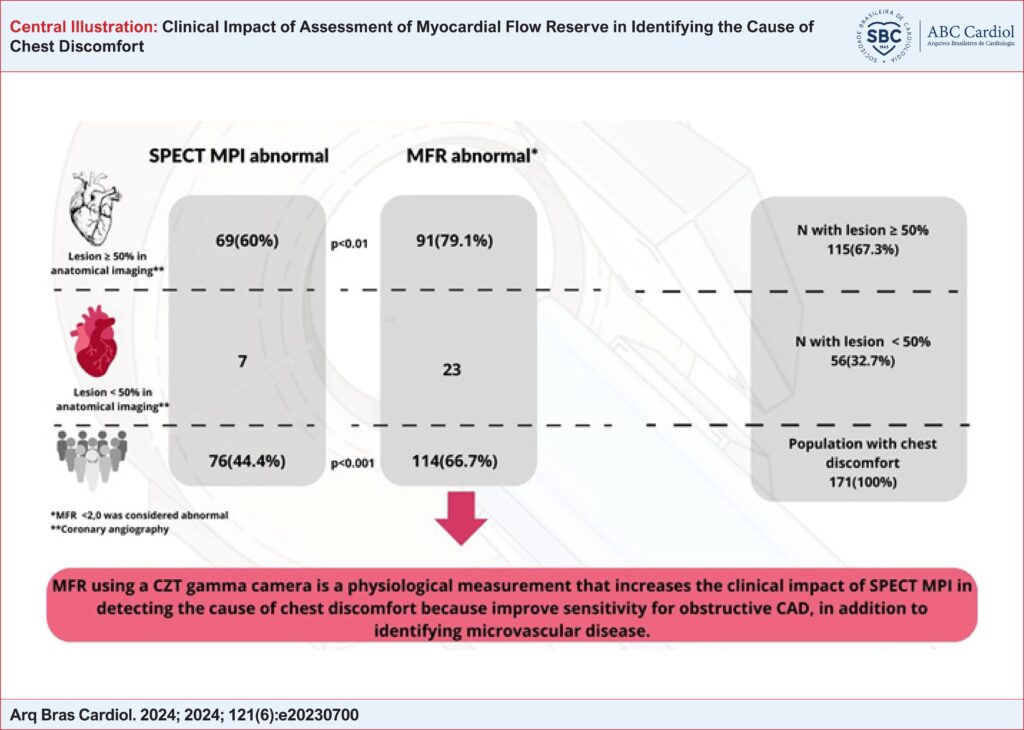Arq. Bras. Cardiol. 2024; 121(6): e20230700
Clinical Impact of Assessment of Myocardial Flow Reserve in Identifying the Cause of Chest Discomfort
This Original Article is referred by the Short Editorial "Analysis of Myocardial Flow Reserve Using the CZT Camera. Additional Value to Perfusion and Functional Information in Identifying the Cause of Chest Discomfort".
Abstract
Background:
Gamma cameras with cadmium-zinc telluride (CZT) detectors allowed the quantification of myocardial flow reserve (MBF), which can increase the accuracy of myocardial perfusion scintigraphy (MPS) to detect the cause of chest discomfort.
Objective:
To assess the clinical impact of MBF to detect the cause of chest discomfort.
Methods:
171 patients with chest discomfort who underwent coronary angiography or coronary CT angiography also underwent MPS and MBF in a time interval of <30 days. The acquisitions of dynamic imaging of rest and stress were initiated simultaneously with the 99mTc injection sestamibi (10 and 30mCi, respectively), both lasting eleven minutes, followed by immediately acquiring perfusion images for 5 minutes. The stress was performed with dipyridamole. A global or per coronary territory MBF <2.0 was classified as abnormal.
Results:
The average age was 65.9±10 years (60% female). The anatomical evaluation showed that 115 (67.3%) patients had coronary obstruction significant, with 69 having abnormal MPs and 91 having abnormal MBF (60.0% vs 79.1%, p<0.01). Among patients without obstruction (56 – 32.7%), 7 had abnormal MPS, and 23 had reduced global MBF. Performing MBF identified the etiology of the chest discomfort in 114 patients while MPS identified it in 76 (66.7% vs 44.4%, p<0.001).
Conclusion:
MBF is a quantifiable physiological measure that increases the clinical impact of MPS in detecting the cause of chest discomfort through greater accuracy for detecting obstructive CAD, and it also makes it possible to identify the presence of the microvascular disease.
Keywords: Myocardium Flow Reserve; Myocardium Ischemia; SPECT
781

